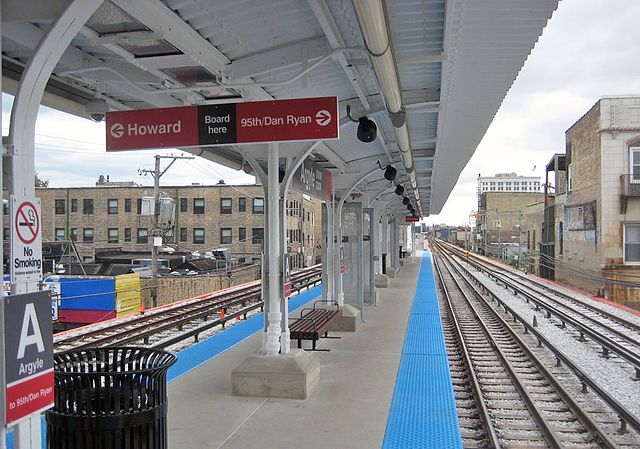
[The following was written in September 2016, but for some reason was not published until January 2017.]
If good transit increases land values – which it does – then shouldn’t the increase in real estate values should be used to fund transit infrastructure? Yes, if you do it right.
Case in point is CTA’s “Red Purple Modernization Project” and, in particular, the “Lawrence to Bryn Mawr Modernization.” The structure is nearly 100 years old, been maintained somewhat, it seems reasonable that it might need rebuilding. Maybe it’s even reasonable to widen the platforms (which must account for a lot of the >$1 billion cost), even tho we know from Granville and Loyola that elevator access can be achieved on existing narrow platforms. It would be interesting to know of any evidence that narrow platforms actually are associated with more accidents or injuries than wider platforms.
We’re already stuck with a federal funding system thru which skilled local politicians have milked federal taxpayers for over $1 billion just for this 1.3 mi segment. But a local match is needed. It’s not clear from the posted documents how much this match would be, but under new laws the State permits “Transit TIF’s” which can be used to raise much of it.
According to the CTA documents, “Transit TIF funds are created by growth in property value, known as increment, that occurs because of the investment in transit.” That’s almost certainly a lie, as a TIF absorbs the entire increase in assessed value that occurs during its life. Increase due to better schools goes to the transit TIF. Ditto for increase due to more effective policing, sanitation improvements, libraries, flood control, fire protection, or anything else the government does and pays for. Ditto for increases due to private activity that makes the area more desirable (for instance, good private schools have been shown to raise land values). Ditto for inflation, which has already returned to real estate values and will doubtless continue, on the average tho not every year, for decades.
So where will governments get the money to pay for schools, sanitation, libraries, and everything else including pension costs resulting from past services? The land value increase is already taken, as is the increase in improvements and from inflation. So it’ll have to come from other taxes. We’re already seeing higher taxes for nearly every kind of productive activity, and we’ll just see more. It’s been pretty well demonstrated that people will put up with this. Not a lot all at once, but a bit more every year.
We’re stuck with this, it is going to happen, the current crew will be re-elected repeatedly or similar ones put in their place. But, just for fun, we might consider what should have been done instead.
Well, first, a proper evaluation should have been done of restoring the third track on the parallel Metra line a mile or so west. Restore a couple of the stations which existed there sixty years ago, integrate the fare structure, and we might find that two tracks would have been sufficient. But that would have required more coordination than legislators seem to feel is necessary.
Second, CTA needs to fix operational problems that constrain its capacity. At Clark Junction, for instance, it takes about 18 seconds to reset the switches and signals after the route clears. Similarly, at Howard trains approaching from north and south are often held out because nobody can get empty trains out of the station, or perhaps sometimes because nobody got around to changing the signals. How could this be fixed? How many more trains handled?